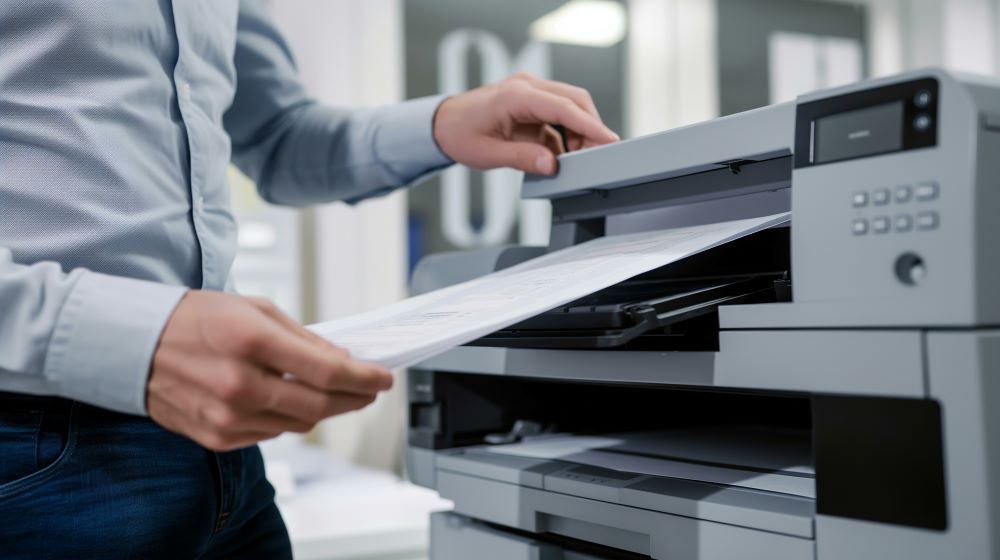Paper documents have been a pain in your neck these days. They are bulky, easily damaged, and their content is time-consuming to find. Digitization of documents has a lot of benefits that can turn your file cabinet into a clean, secure digital library.
No more rummaging through stuck folders or searching for a key document that could be misplaced somewhere. Furthermore, digitization enhances security. Digital documents can be encrypted and there is access control; this means that users are assured that only authorized people see them.
Below, we will discuss best practices for secure storage when digitizing your documents.
Planning and Prioritization
The first step to successful digitization is understanding the scope of your project. Gather all your physical documents, whether they’re stored in overflowing filing cabinets, scattered desk drawers, or hidden corners of your home.
Once you have a general idea of the volume and types of documents you possess, it’s time to prioritize. Not all documents need to be scanned immediately. Focus on the most critical and frequently used documents first. Here’s a prioritization strategy:
- Essential Documents: Scan irreplaceable documents like passports, birth certificates, social security cards, and property deeds first. Having secure digital copies ensures easy access in case you need them for emergencies or applications.
- Frequently Used Documents: Next, tackle documents you reference often, such as insurance policies, user manuals for frequently used appliances, and warranties for electronics. Having them readily available on your computer eliminates the need to rummage through physical files.
- Lower Priority Documents: Finally, scan less crucial documents like old receipts or outdated tax returns. While still important, you likely access them less frequently.
This prioritization ensures you have easy access to the documents you need most while making the digitization process more manageable.
Equipment and Software Selection
Equipping yourself with the right tools is crucial for efficient digitization of business processes. When choosing a scanner, consider the volume and type of documents you possess. Flatbed scanners are ideal for delicate items like photos or bound papers, requiring manual page-by-page scanning. Document feeders excel at handling large stacks of loose sheets, automatically feeding them through the machine.
If you have a small collection primarily consisting of photos or bound documents, a flatbed scanner might suffice. For significant amounts of loose paper, a document feeder will save you significant time and effort. As your digital archive grows, a Document Management System (DMS) becomes an asset.
This software helps organize, store, and retrieve your scanned documents efficiently. Features like folder structures, keyword tagging, and full-text search make finding specific documents a breeze. While some scanners come with basic DMS software, cloud-based solutions offer robust security, accessibility from any device, and often integrate with other productivity tools. Researching different DMS options and their pricing structures will help you find one that best suits your needs and budget.
Scanning and Digitization

Once you’ve gotten the right equipment, the next move is to digitize them by scanning. This digitization makes it easy to manage, share, retrieve, delete, and secure documents. It’s also useful if you want to scale your operations as your business, as it eliminates the manual processes. The two most common options are PDF (Portable Document Format) and JPG (JPEG).
Knowing the strengths and weaknesses of different formats for your documents turns out to be very important for the final solution. PDFs are just fine for preserving the original formatting—it’s ideal for contracts, invoices, or any kind of document where the aspect really matters. Besides, with the help of OCR technology, it is possible to make indexes of PDFs and search for a needed phrase in a document.
JPGs are a good choice for photos, scanned images, or documents where the layout isn’t crucial. They offer smaller file sizes, making them more suitable for situations where storage space is a concern. However, JPGs typically use compression, which can lead to a slight loss of image quality, especially with text-heavy documents.
Document Organization and Indexing
Once all your documents are scanned, the next step is to set up a clear and sensible organization system so that documents can easily be found. This entails the creation of a folder structure that mirrors as closely as possible how you would sort your physical documents. For example, have broad main folders for “Finances,” “Medical,” and “Personal,” then subfolders under each for types of documents. This sets up a hierarchical structure that easily enables one to navigate quickly in finding the documents needed.
Further increasing the level of organization in your digital archive by adding metadata tags and keywords promotes better searchability. Metadata is information added to your digital files; it is usually hidden from view. Examples include the document author, creation date, or even file type. Keyword tagging is the process where you attach terms relating to your documents’ contents.
Secure Storage and Access Control
As your digital archive grows, securing your scanned documents becomes paramount. Traditional physical storage can be vulnerable to theft, fire, or water damage. Cloud storage offers a secure and accessible alternative, allowing you to access your documents from any device with an internet connection.
Look for providers that offer file encryption at rest and in transit. Encryption scrambles your data using complex algorithms, rendering it unreadable by unauthorized users even if intercepted. Additionally, consider access controls that allow you to restrict who can view, edit, or download your documents.
Implementing strong user authentication protocols like two-factor authentication adds another layer of security. Two-factor authentication requires users to verify their identity with two separate methods, such as a password and a code sent to their phone, making unauthorized access significantly more difficult.
Backup and Retention Strategies
Safeguarding your digital documents goes beyond secure storage. Implementing a regular backup schedule protects your data from accidental deletion, hardware failure, or even cyberattacks.
Consider backing up your scanned documents to a separate external hard drive or cloud storage service in addition to your primary storage location. This redundancy ensures you have a readily available copy in case of unforeseen circumstances.
The frequency of your backups depends on how often you update your documents. For frequently changing documents like financial records, weekly or even daily backups might be necessary. For less frequently updated documents like passports or birth certificates, monthly backups might suffice. Automating your backups ensures this crucial task doesn’t get overlooked.
This will promote understanding of document retention policies and law. Some documents, such as tax returns or medical records, are required by law to be retained for a certain period. Do some research on indicated regulations and industry standards which can help in determining the appropriate retention period for your documents.
Conclusion
You can create a digital document system that runs smoothly by following these strategies. That means peace of mind when it comes to knowing your critical information is secure and accessible, and a world of convenience in managing your documents.
Welcome to the paperless revolution, where hours of your time could be saved by that organizational edge brought with a well-kept digital archive.



